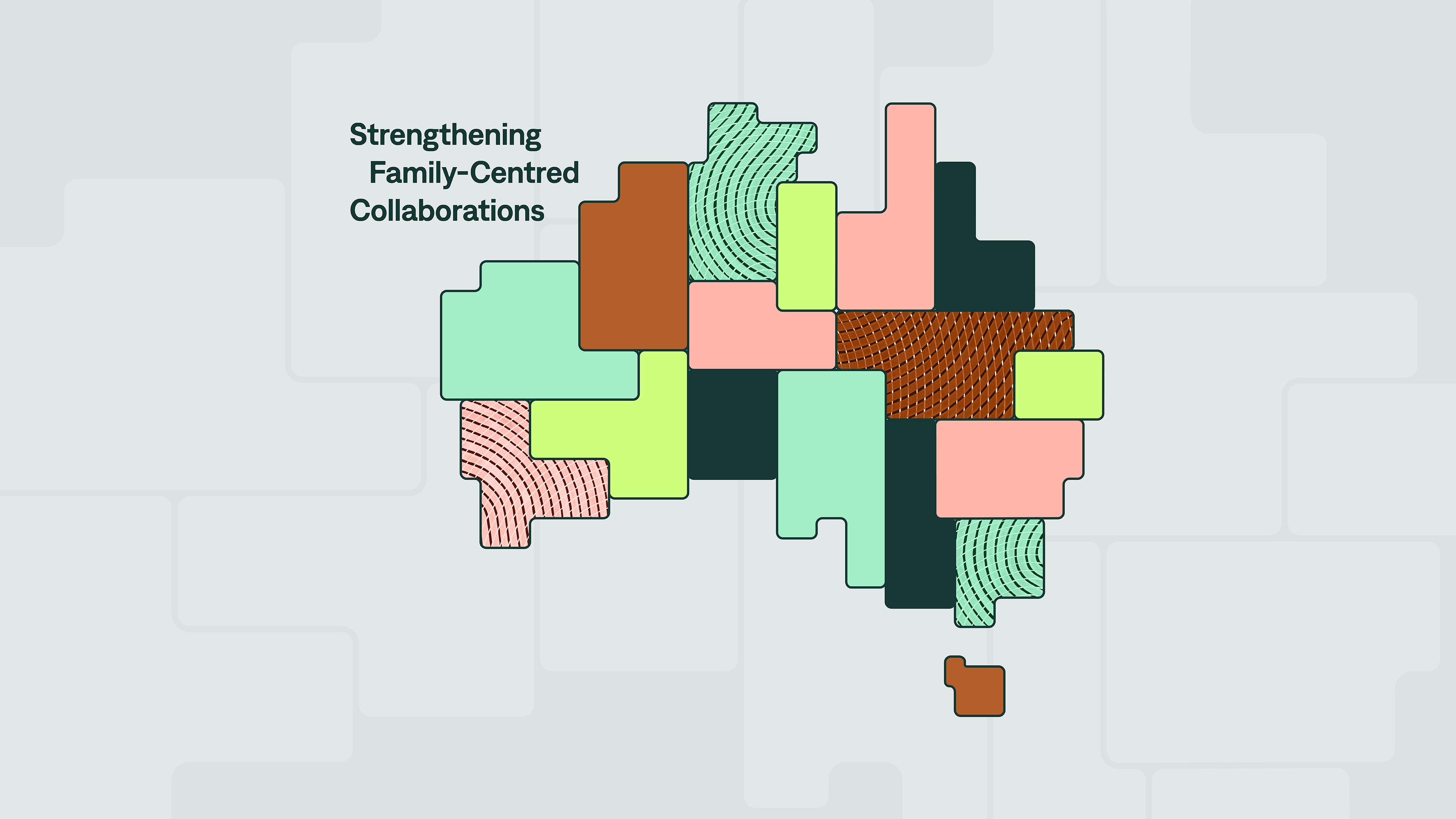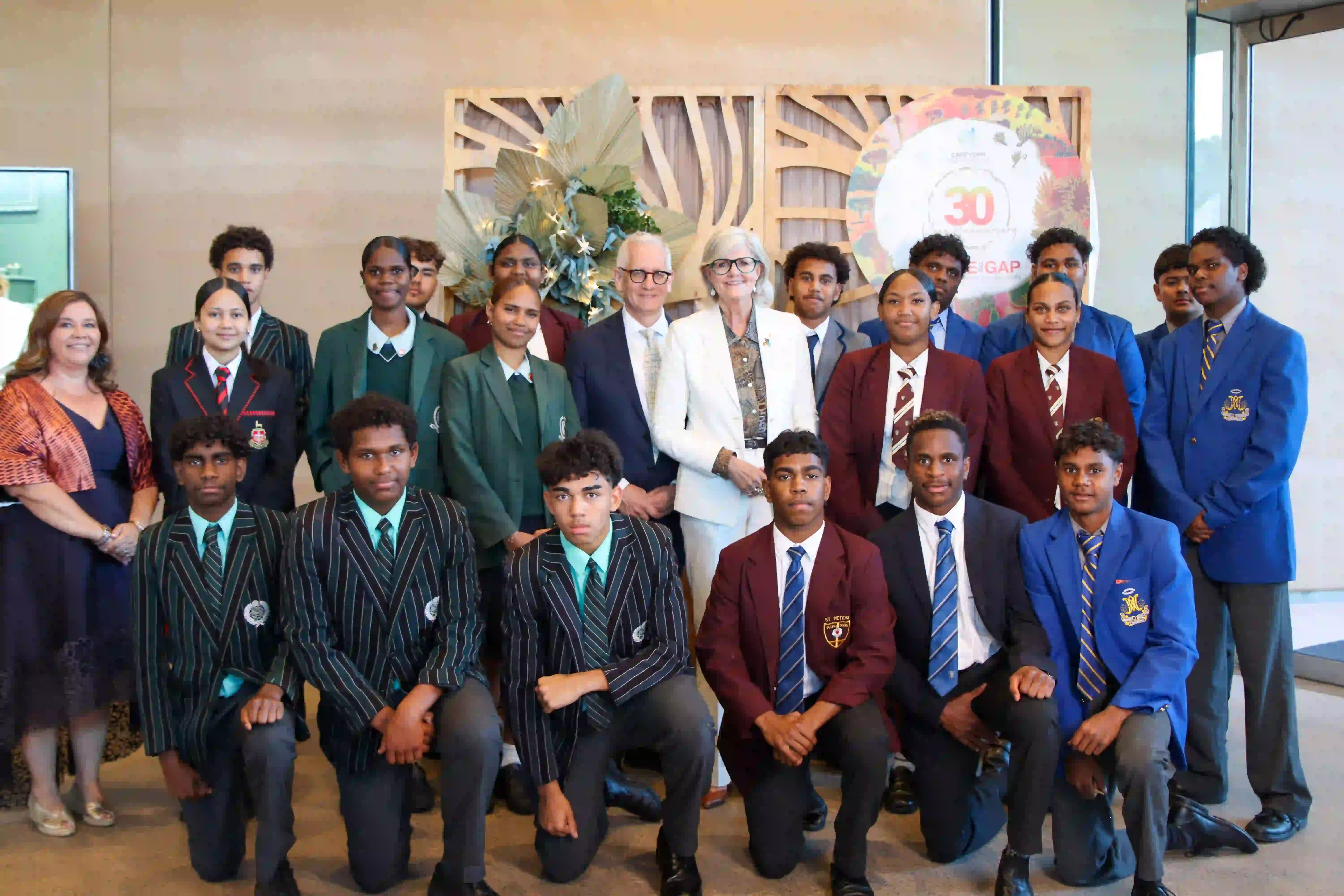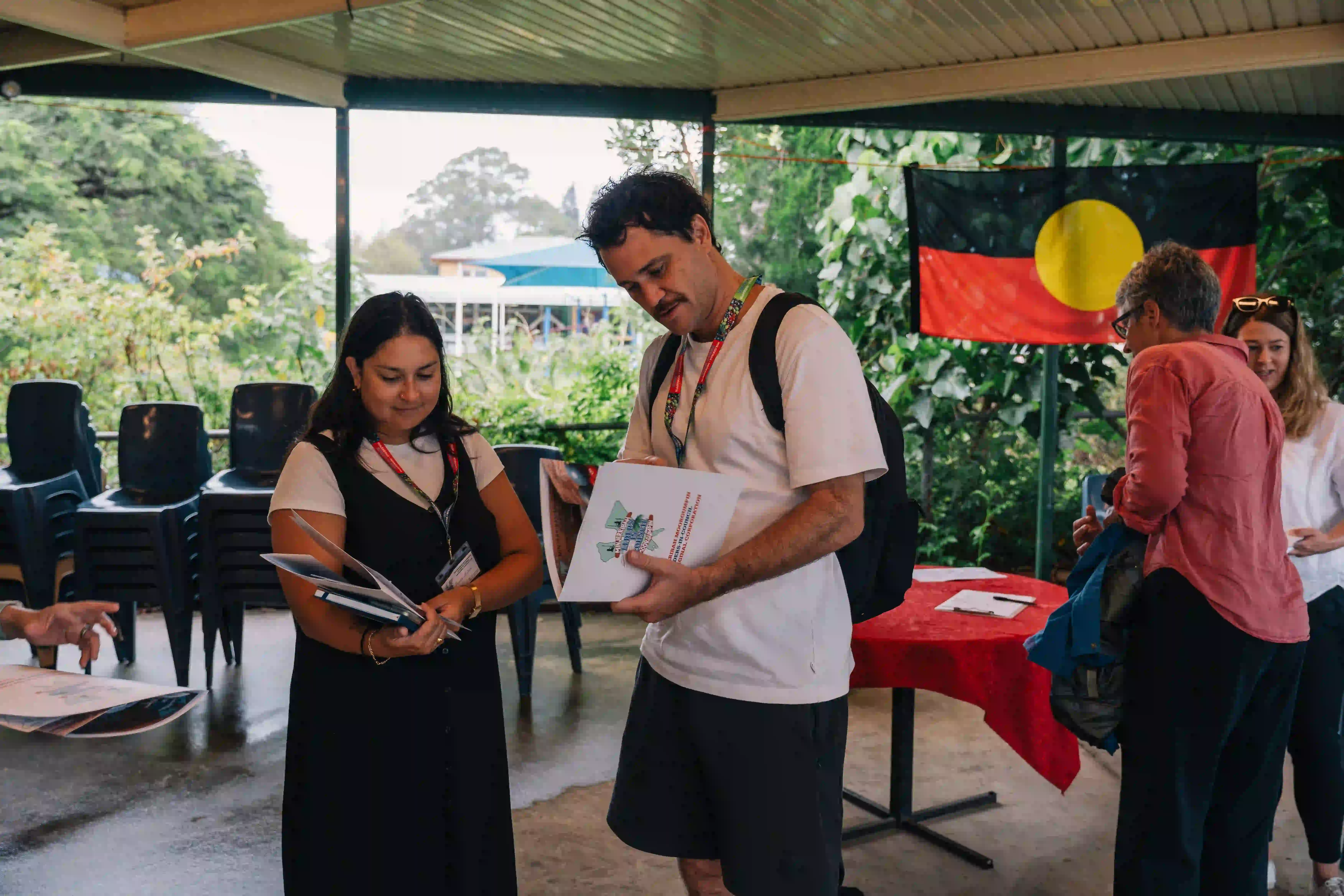Image: Our Place employees, courtesy of Our Place
Peter Johnson is the Executive Director, Social Programs at Kanyirninpa Jukurrpa (KJ), an organisation based in the Western Desert region that works with Martu to build strong, sustainable communities. KJ has worked for over a decade with Martu, and recognise that in this cross-cultural interface, Martu have their specific skills and knowledge, while non-Martu have different skills and knowledge.
Peter says that 20-30% of KJ’s staff time is spent helping Martu people to navigate “white people processes.” From getting mobile phones to work, to banking, to negotiating money for funerals, he says the increasing digitisation of service delivery has come with an expectation that people are able and willing to self-service. And for people facing barriers to access, such as those in the remote Aboriginal communities he works with, it’s not always possible.
“Governments and corporates have abrogated responsibility by assuming people can access their services,” he says, “and community organisations pick up the tab.”
It’s a familiar story. Many not-for-profits employ staff as ‘Linkers’, helping people and communities navigate complex social and community service systems to access the support and resources they need.
Earlier this year, PRF commissioned research by dandolopartners to better understand the role of Linkers - also referred to as navigators, mentors, community facilitators or coaches - and recently the Foundation convened 13 of its partner organisations to further explore the role and share knowledge and insights about Linkers in practice.
Despite working across different sectors, PRF’s partners pointed to remarkable similarities in the way Linkers operate in their organisations.
Linkers often support people with intersectional experiences who are facing numerous barriers to accessing services, which sees Linkers negotiating multiple policy domains and troubleshooting problems for different barriers, whether it be helping someone get a copy of their birth certificate, or access housing or employment.
“By the time a young person with experiences of homelessness enters a Youth Foyer,” says Foyer Foundation CEO Liz Cameron-Smith, “there are a lot of other things already going on in their lives they may want support with.”
Or as STREAT CEO Bec Scott puts it, “It’s not just linking, it’s a form of acrobatics.”
PRF partners reported that their Linkers come from a place of advantaged thinking. They start with a strengths-based approach and are focused on building an individual’s capacity to engage with services.
The Linker model is relational by nature and Linkers take a personalised, client-centred approach where individuals define the outcomes they wish to achieve.
“The young person is in charge of their future,” continues Liz. “They set their own goals.”
It’s also a role that is often place-based, leveraging connections to community. Our Place Community Facilitator Caroline James-Wilson says it’s incredibly important for Linkers to be integrated with the local community.
“We need to understand the landscape of the community to ensure that we get people to the right service at the right time.”
While the Linker model can offer long-term relationships and sense of belonging, Linkers themselves are not always supported in the work.
Kallie Rougos, the Director of Capability at Our Place says it’s a role that absorbs a lot.
“Hearing the ways that systems are failing people and not seeing things get better can create fatigue,” she says.
Whether it’s a role that is here to stay, or a band-aid solution for systems that are failing the very people they’re in place to support, the workshop participants identified opportunities to support the Linker model, and further evaluate its effectiveness.
Kallie says connecting Linkers to others doing a similar role can be incredibly energising, and that communities of practice would help Linkers learn from and share with each other.
“We need to truly understand what it takes to support them,” she says.
“Where you sit in the linking ecosystem matters a lot,” says Bec. “The ability for Linkers to connect with their counterparts inside the system could provide an opportunity to surface and address systemic issues.”
Annette Michaux, Director of Parenting Research Centre, agrees, saying linkers are an opportunity to nudge the system.
“Linkers can see the gaps in a system. They can help us come at things anew and refresh the thinking in the broader system.”
“Ultimately,” continues Kallie, “what we want is the system to work differently and to meet the needs of the community.”











